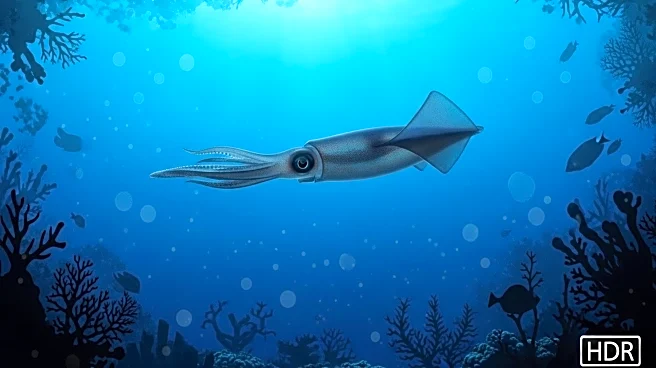What's Happening?
A recent study has analyzed the habitat variability of Sthenoteuthis oualaniensis in the northwestern Indian Ocean, focusing on the impact of ENSO events. The research utilized data from light purse seine fishing logbooks and oceanic environmental data from the Copernicus Marine Environment Monitoring Service. The study aimed to understand the spatial distribution of the species and the environmental factors affecting its habitat. The findings revealed that Chlorophyll-a concentration had the highest weight contribution rate in spring, while EU had the highest in autumn. The study also employed a Generalized Additive Model to explore the relationship between the species' catch per unit effort and various environmental factors.
Why It's Important?
Understanding the habitat variability of Sthenoteuthis oualaniensis is crucial for sustainable fisheries management in the Indian Ocean. The study's insights into environmental factors affecting the species can help in predicting suitable habitats and managing fishing efforts. This research is significant for the fishing industry, as it provides a scientific basis for optimizing catch rates while ensuring the conservation of marine resources. The findings can also contribute to broader ecological studies on the impact of climate events like ENSO on marine biodiversity.












